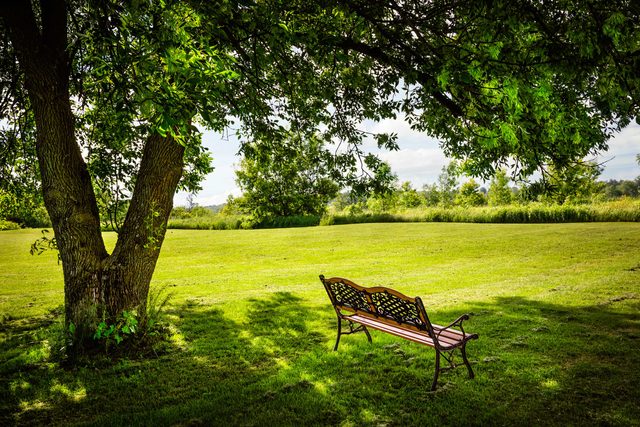
Place a wooden bench or chair under a tree
The simple task of putting a seat outside will inspire you to leave your couch and get some fresh air, says Beth Kaplin, PhD, program director for the Center for Tropical Ecology and Conservation at Antioch University. “Spending time in view of what’s called green space has been shown to reduce stress levels and anxiety.” Wood furniture in particular calms us, suggest a few provocative studies—especially when placed in an area with dappled lighting, like under a tree. According to a 2015 report from the Planet Ark Environmental Foundation, an Australian non-profit organization, wood is not only aesthetically pleasing in its color, grain, and shape, but it also may illicit positive feelings of harmony and balance. The report cited some small studies that showed lowered blood pressure and heart rates in people who lived among wood interior spaces and wooden furniture.
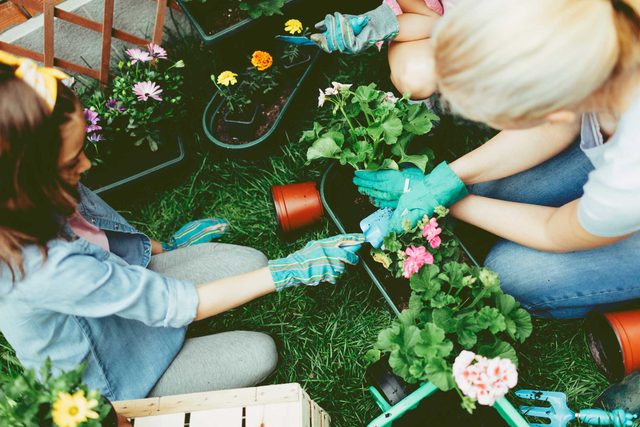
Warm up your green thumb
Not only can a garden be rich in vivid colors, it can also quiet your mind. A famous theory called the biophilia hypothesis says humans have an innate need to connect with the natural environment. So your own little plot of paradise may be the therapy you need after an exhausting day in the office. Before you start planting, it’s best to have a plan. “Think about what purpose you have for your garden. Is it a learning garden for your kids? Is it a food garden? Is it a native habitat?” says Libby McCann, PhD, director of environmental education at Antioch University. Potted plants and herb gardens are a great gateway because they are low maintenance.
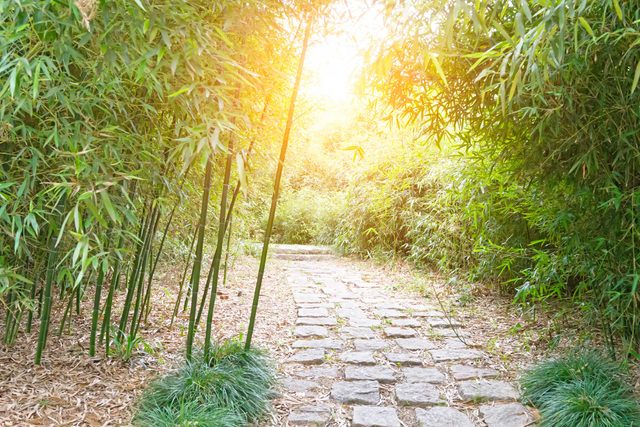
Create mystery with curves
“You know how people always go, ‘Ahh,’ when they step into a wooded glen? You want to create that effect in your garden by creating a comforting, relaxing space that’s slightly out of view,” Augustin says. “So when you enter it’s like a mini surprise.” Garden experts say curved paths throughout your yard or garden are the best way to achieve mystery.
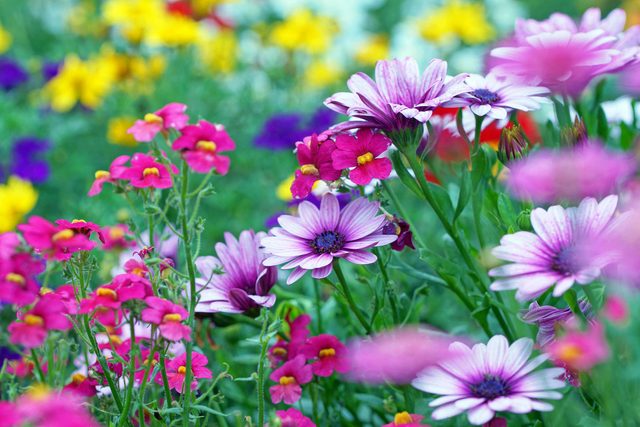
Stagger colors where you walk
Bright colors that are not too saturated tend to be soothing for the eyes and mind. According to Feng Shui principles, lavender colors evoke tranquility and calm; turquoise is recommended for establishing movement and growth; dusty blue shades have also been known to help lower blood pressure and slow down the heart rate; greens nurture growth and change; and yellow gives us hope and clarity. To evenly distribute these colors throughout your yard, paint a wooden garden bed or old tin cans and transform them into pots for flowers. “Put colors where you walk up close and personal,” Terri Hahn, principal at LADA, P.C. Land Planners says. “Your feet always follow your eye.”
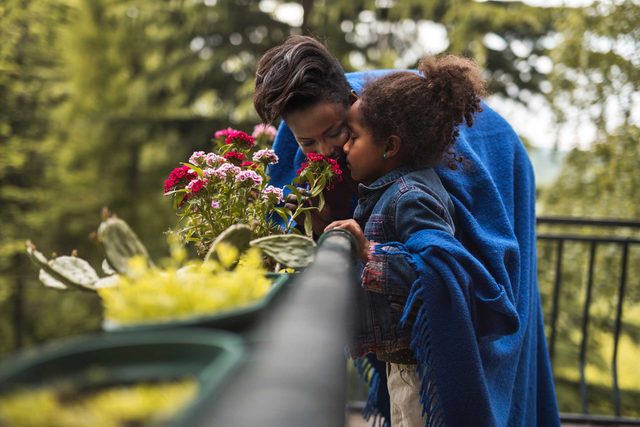
Unleash different fragrances
Lilacs, lavender, lemon, rosemary, thyme and mint all smell wonderful with some added health benefits, such as better sleep (lavender) a cognitive boost (rosemary) and enhanced athletic performance (mint). Experts suggest planting these fragrant herbs along a path or in between stepping stones. “Your legs and your feet rub across the leaves and releases the amazing scents of those herbs,” Kaplin says. Here are the 7 healing scents from aromatherapy.
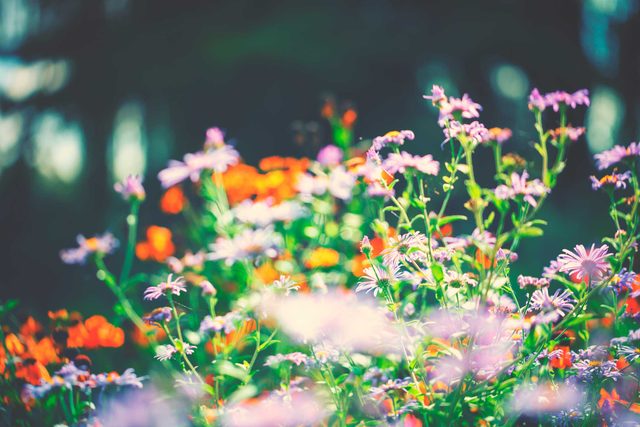
Leave a part of your yard wild
Leaving a small patch of your lawn to grow wild is a great form of low maintenance gardening and it will also attract wildlife of all kinds into your yard. All you have to do is plant some easy-care flowering grasses and plants like bee balm, milkweed, Echinacea, and ferns.
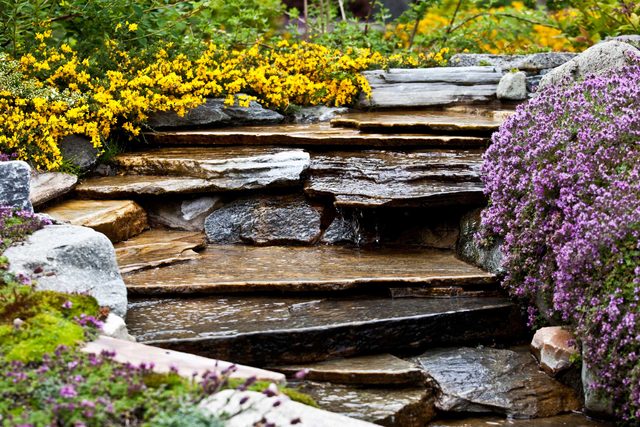
Incorporate water
Flowing water from a fountain or small man-made stream creates tranquility. Researchers at Newcastle University found flowing water to be one of the most pleasant sounds out of 74 sounds studied. “It might easily have something to do with our prehistory as a species and the way our brain structures evolved,” Augustin says. “When we were beside a burbling brook, we were assured of having water to drink.”
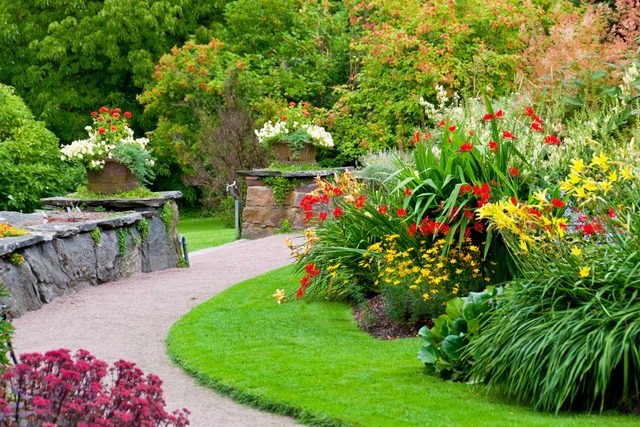
Create the illusion of a circle
Environmental psychologists and landscape architects say curvier things are more comforting to look at (think rounded leaves, curved floral petals, and slightly curving branches). They may also be linked to enhanced creativity. In order to create a circular landscape in a square plot of land, you can use depth, plants, shrubs, and trees to design a visual arch. Or configure your seating arrangement into a circle; you’ll encourage eye contact and engagement among you and your guests.
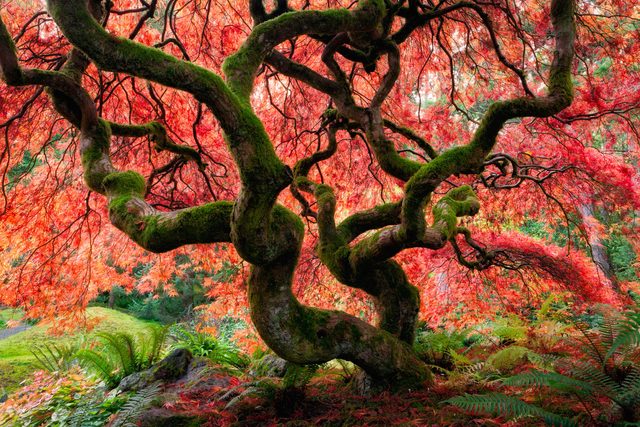
Have a focal point
“Create a visual anchor point to feel secure,” Hahn says—by planting a Japanese Maple tree for example. The focal point should be vertical, have color and measure at least five to six feet tall, so you always know where it is. Drawing materials from your house, like using the stone from your patio and incorporating it onto a path, is another smart way to lure people towards your focal point.
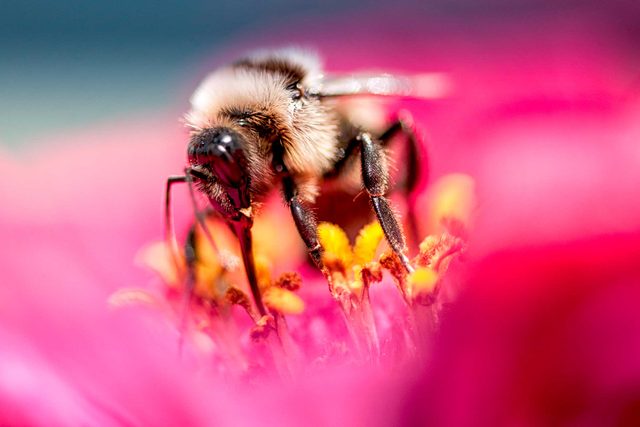
Welcome wildlife
Ecologists recommend planting native species in your yard to sustain the natural connections between animals and plants. But the most important thing to remember is how to lure in pollinators like hummingbirds, bees and butterflies to help cross-pollinate and nourish vegetation. Try planting liatris, nasturtium, butterfly weed, bee balm, delphiniums and other plants. “Connection with wildlife is really important for human beings,” Kaplin says. “If we can take our eyes away from our smart phones for a moment and see nature around us it can actually have a pretty big benefit and reduce stress.”